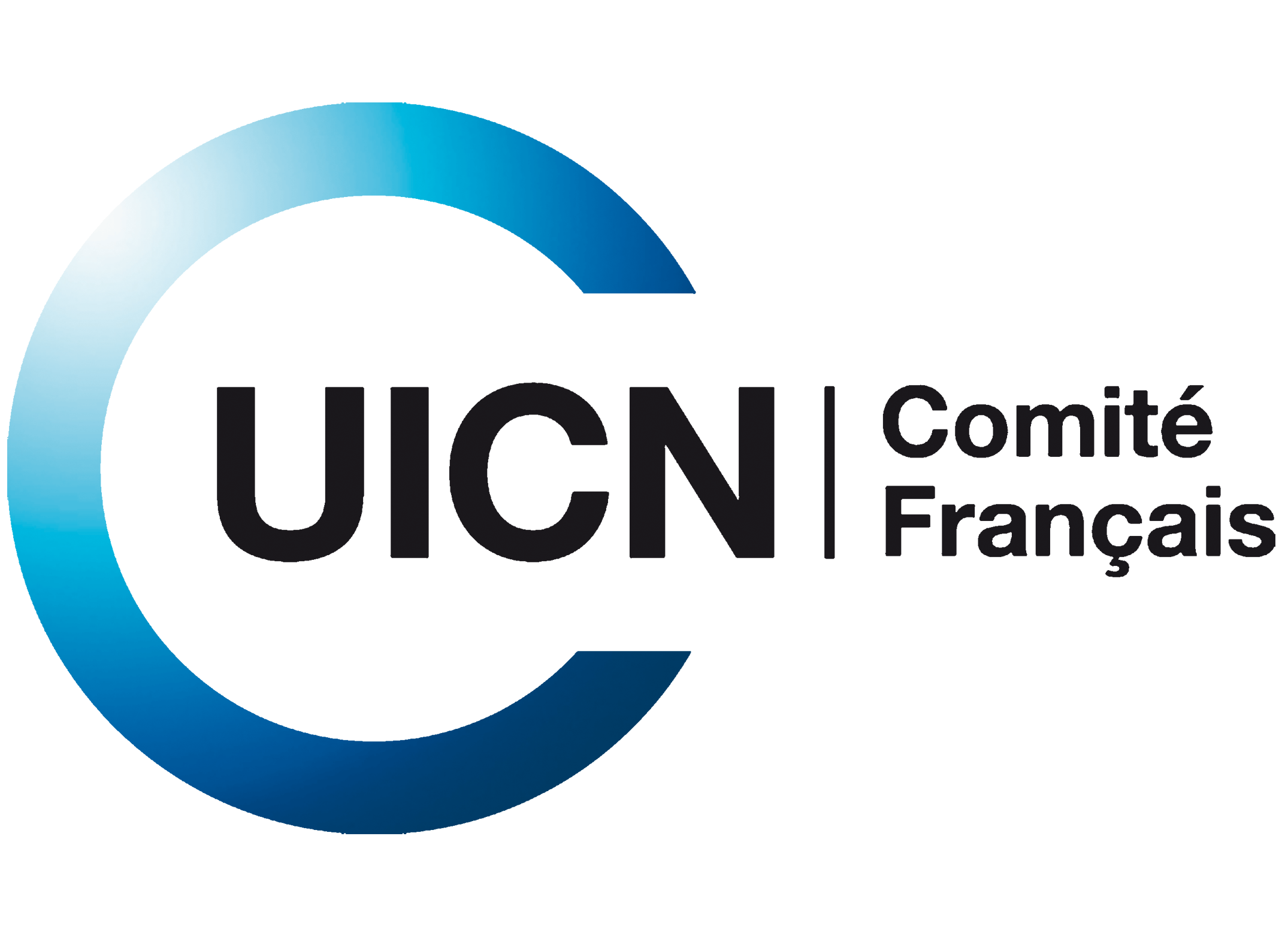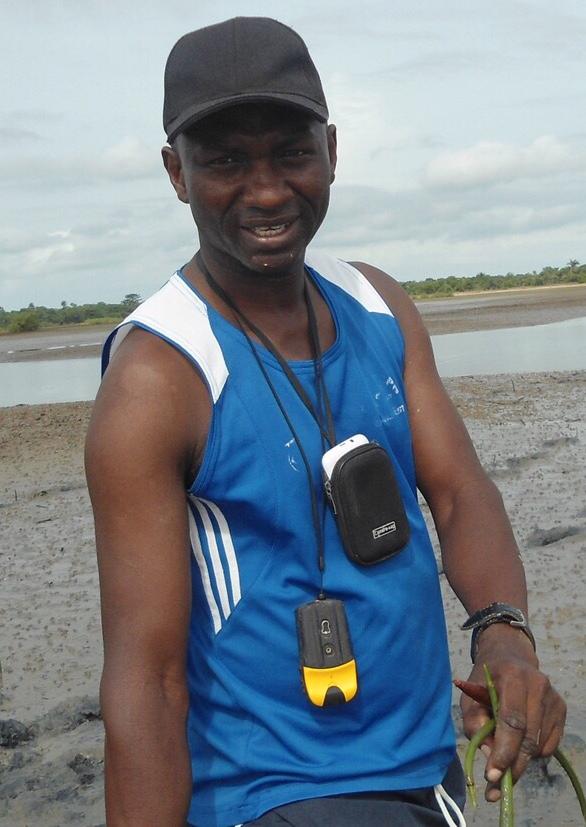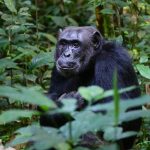Interview of Pathé BALDE, ROK
Interview with M. Pathé Baldé, Conservateur of the Kalissaye Bird Reserve and with M. Jean Diassy, President of the management comittee of the Kalissaye Bird Reserve
Can you briefly tell us about the Kilassaye Bird Reserve : size, ecological interest, types of landscapes, date of creation, governance ?
The Kalissaye Bird Reserve (ROK) was created by decree No. 78-809 of July 28, 1978. It is located in Casamance, in the south of Senegal. When it was created, it covered an area of 16 ha and had two sandy islands surrounded by water during high tides. However, the dune movements observed in recent years have resulted in an increase in the size of the area of the ROK (220 ha). The main objective of the creation of the reserve is the conservation of a complex ecosystem to ensure good reproduction of coastal and marine species. It concerns in particular:
– To protect a complex ecosystem so that it plays the role of hosting nesting bird colonies and breeding turtles,
– To ensure good breeding conditions for migratory birds,
– To promote tourism and scientific research.
The ROK is characterized by a diversity of forest ecosystems, island savannas, estuaries and an aquatic part. The eco-geographical zone of the reserve is crossed by bolongs and also presents temporarily flooded lagoons, marshes and mudflats.
The mode of governance of the bird reserve involves all the stakeholders thanks to a management committee: administration, local community, schools, environmental education centers, fishermen, women’s economic groups, young people. It allows a shared and inclusive governance.
The reserve is home to a diversity of species of birds and sea turtles. Among the birds, some are Afrotropical migrants, Western Palaearctic migrants. This group is composed of shorebirds (black-tailed godwit, sanderling, red-haired godwit, elegant avocet, red knot, whimbrel, ash curlew, etc.), laridae (king terns, caspian terns, mocking gulls, gray-headed gulls, etc), phalacrocoracidea (African cormorants, great cormorants,), pelicandiea (gray pelican, white pelican), ardeidea (gray heron, dimorphic egret, great egret, etc). On the sea turtle side, we find mainly green turtles there, but also leatherback turtle, loggerhead turtle, olive ridley turtle, hawksbill turtle. This year 89 green turtle nests were observed in the ROK, a record!
This year has been special due to COVID, how have the management committee and the ROK managed to adapt and continue to carry out a number of activites ? What are the lessons learned from this year ?
In 2020, the reserve received support from the PPI through the project “Consolidation of the biological recovery of laridea and marine turtles by strengthening the governance of the kalissaye bird reserve in Senegal”. By implementing this project, the first strategy has been to unify all the stakeholders that intervene in the reserve area. This made it possible to formalize a unified committee. With this unified committee, activities are planned, implemented and evaluated in a participatory and inclusive approach.During the implementation of the project, the Covid-19 occurred. This pandemic has resulted in a delay in the execution of certain activities and especially mistrust in contact with migratory birds due to the lack of information on the modes of transmission. Thus, taken into account the barrier measures and regular meetings which made it possible to review the planning of activities to be in line with the project schedule.COVID 19 has resulted in the confinement of fishermen in their locality. This reduced the pressure on marine resources at the start of the crisis. But quickly, we saw a strong influx of fishing boats from other areas. Strong sensitization towards fishermen is regularly made by the ROK team and the management committee to avoid increasing pressure during this period. We plan to continue this sensitization and strengthen the involvement of residents and users with the establishment of an inter-village committee for monitoring, surveillance and protection.
You also made an exchange visit: what did you visit and what were the lessons learned form this visit ?
We would like to thank the PPI for supporting this exchange visit which made it possible to cover the Popenguine nature reserve, the Somone Nature Reserve of Community Interest, the Joal Fadjouth Marine Protected Area, the Language National Park de Barbarie (St-Louis). We visited various aspects that can be summarized in 3. These are:
– Governance, particularly the involvement of local populations in the areas of management, planning, decision-making, implementation, evaluation and reorientation.
– Tourism promotion, in particular the paiement of entry fees to sites, tourist accommodation. The resources generated by tourism development are distributed among the different socio-economic sectors of the locality. It is about support for health, education, worship, infrastructure. The resources drawn from tourism development also make it possible to set up a savings and credit mutual society for the benefit of various interest groups – economic.
– The establishment and respect of periods of biological rest. This allows the resource to regenerate and grow.The participation and enthusiasm of the populations in conservation, monitoring and surveillance activities are aspects that stood out during the discussions. This allows the population to acquire capacity building in areas of community life, biology, governance, advocacy, management, communication, etc.
How do you plan to implement these lessons later in the ROK?
After this visit, we organized a sharing meeting and drafted an action plan to improve our technical and organizational capacities. This will allow us to integrate all the learned components into our daily life. The administration of the reserve has already conceded openness and involvement in planning, development. This process will lead to more inclusive and responsible governance of the population in the management of the reserve. The process started in 2011 with the creation of the management committee. It is accentuated with the PPI and appears to be in its consolidation phase with the completion of this exchange visit.The exchange visit also helped to understand that community action must be based on volunteering and selflessness. We have undertaken a large campaign to inform and share these experiences in order to convince as many young people as possible about conservation.
What advice would you give to protected area management committees in West Africa or to people living near protected areas ?
The mode of governance and the exchange visit made it possible to understand that the resource belongs to the communities to which the state deploys administrative officers to support sustainable management. As such, conservation, tourism development, the definition of biological rest periods and exploitation must be regulated by the communities under the control of the administration. Which leads us to formulate these advices below for the management committees of West African Protected Areas:
– The resource belongs to the communities. The administration must play a support and advisory role for sustainable management.
– Tourism development can generate significant resources that allow communities to ensure their autonomy in the management of protected areas.
– Communities and administration must enter into a partnership rather than a conflict in the management of resources.
– People gain more appreciation by organizing themselves and observing biological rest periods.
– The populations must acquire the capacity building to be able to take the environmental, ecological and economic dimension in the modes of consumption.
– Conservation will only be optimal if the population gets involved and contributes.
– Savings and credit systems must be set up to finance activities and promote the autonomy of actors.
– We must advocate with decision-makers to establish a system for pricing tourist entry into all protected areas. This will generate resources that can self-finance conservation




